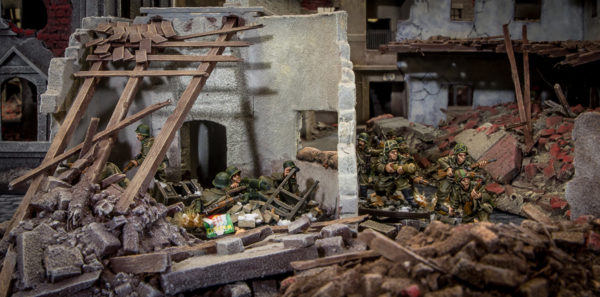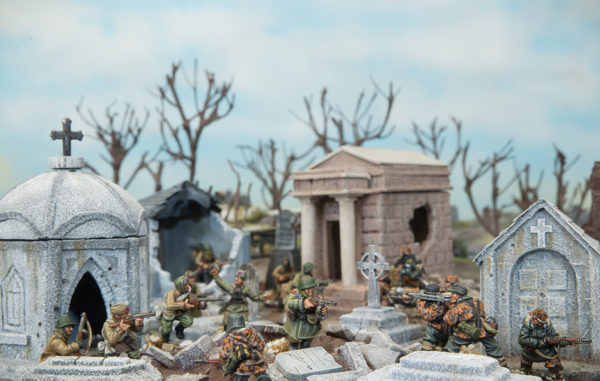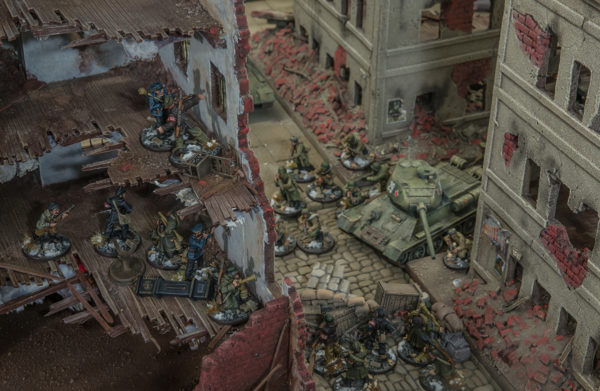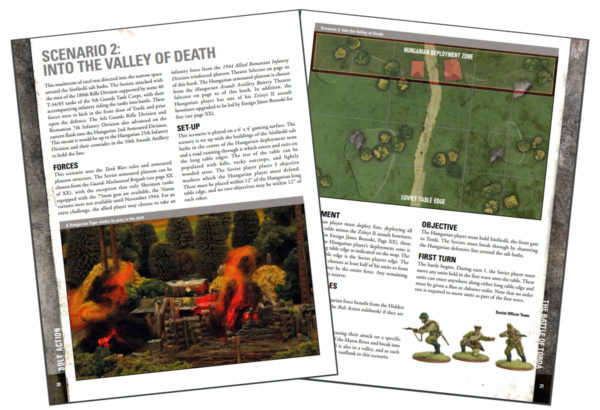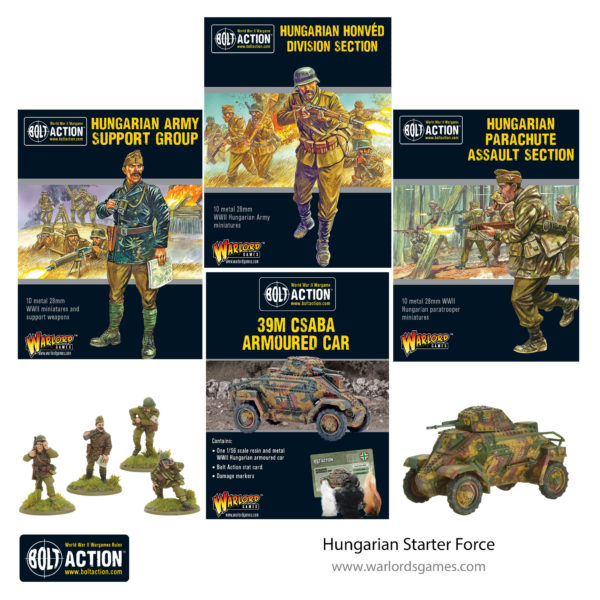The battle for Budapest was characterised by a period of brutal urban warfare. Campaign: Fortress Budapest contains rules to recreate this desperate street fighting.
The Eastern Front was marked by some of the most vicious city battles of the war.
The Eastern Front was marked by some of the most vicious city battles of the war. Of them all, Stalingrad is undoubtedly the most infamous, because the very heart of that city became a battleground for many months and the German Heer suffered its first catastrophic defeat with the complete loss of Paulus’ Sixth Army. However, there were many other cities that became battlegrounds in the east: Kharkov, Kiev, Sevastopol, Odessa, Voronezh, Vilnius, Warsaw, Konigsberg, Budapest, and finally Berlin, to name but a few. Leningrad was besieged for almost three years and the fighting in its suburbs was a constant during that time. All of these places were torn apart by ferocious fighting and if the duration of the battles were shorter in some places than others, the fighting was certainly no less intense.
Fighting in built-up areas brings a perplexing set of extra challenges to unit commanders.
Fighting in built-up areas brings a perplexing set of extra challenges to unit commanders. Buildings, even ones reduced to rubble, make superb fighting positions for defenders while attackers must contend with moving through open streets to advance. The confusing landscape of ruins and rubble was easy to get lost in and squads often found themselves pinned down or cut off with little idea of where friends and enemies might be. Even gaining entry to a defended building could be a miniature battle of its own with fighting room-to-room and floor-to-floor using grenades, bullets, and close combat to dislodge the defenders.
Urban Warfare in Bolt Action
Campaign: Fortress Budapest presents a whole new set of rules for representing urban battlefields, including different terrain types, sets of siege assets to help each side achieve their objectives and rules to represent the chain of command disintegrating as units get separated in the swirling melee.
These rules can be used to represent battles beyond the confines of the Hungarian capital – other sieges like Caen, Manilla and Aachen providing the perfect backdrop for implementing these new mechanics.
Warlorder Tom got the opportunity to put these rules to the test and has given us the lowdown on what to expect:
Tom: Urban warfare is both claustrophobic and desperate, something that is perfectly captured by these rules. Areas of rubble, barricades and buildings allow units to dig in like tics, proving almost impossible to dislodge without high explosive shells or all-out close assault.
Additionally, areas of rubble are a significant hazard to tracked vehicles. Tanks moving through the rubble risk becoming temporarily immobilised or destroyed as they crash through into a hidden cellar. Drive with care, folks!
You’ll also get the option to use sewers to outflank onto the battlefield, making battles even more chaotic, with reserves popping up all over the place without any kind of warning. The outflank test is more difficult, and you run the risk of losing the unit entirely if they get lost (or hit a booby trap), but it’s worth the risk to pop a Soviet SMG squad onto the table in the middle of your opponent’s defensive line.
Campaign: Fortress Budapest
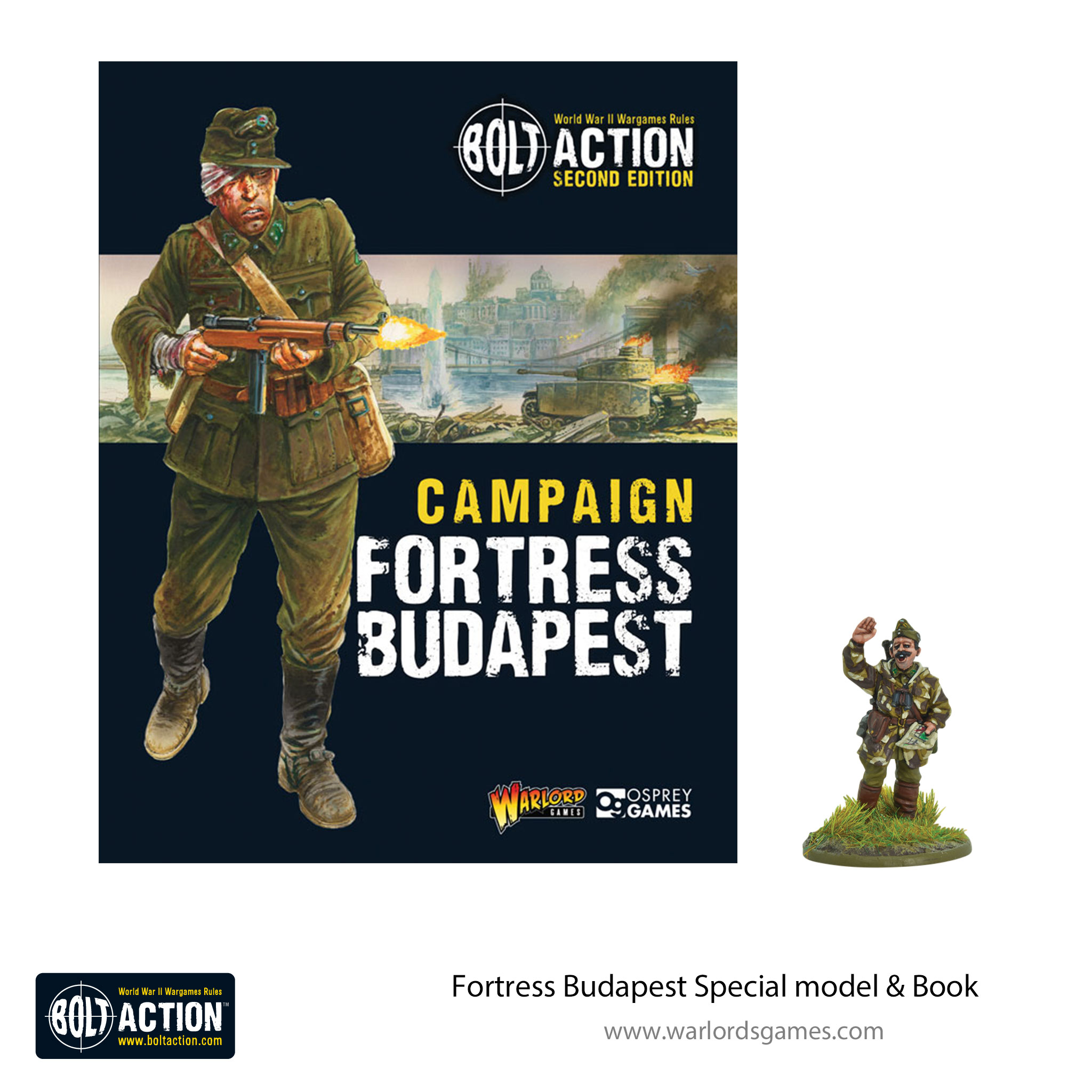
Throughout the autumn of 1944, the Axis forces in the Carpathian Basin were fighting for their very existence. Campaign: Fortress Budapest will inspire and guide you through the entirety of this particular conflict and on to many more victories with your Bolt Action forces…
Hungarian Army
The Royal Hungarian Army was created in 1922 after the defeat and breakup of the Austro-Hungarian Empire in the First World War. Initially limited to 35,000 men under the Treaty of Trianon, the army peaked at nearly 1 million men during the battle for Hungary itself in 1944.
This set contains the perfect Hungarian Army to begin this campaign!


